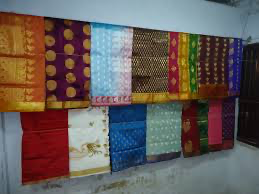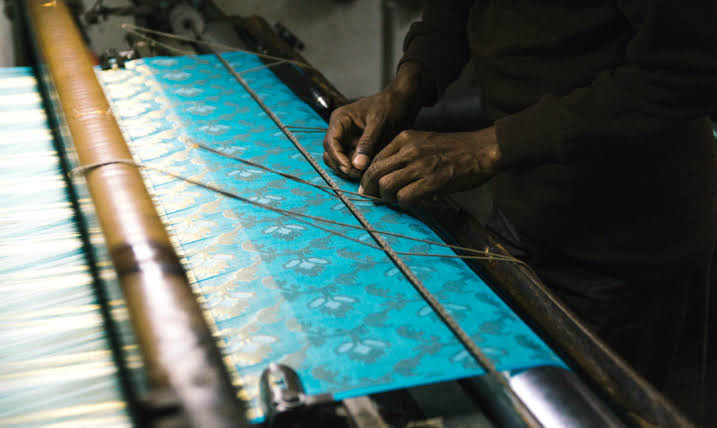Pratiksha Shome
India has a long history of producing high-quality textiles. Indian textiles have a history that dates back to the Indus valley civilization in the fifth millennium BC. The people of that civilization wove their clothing out of hand-spun cotton, and they dyed it indigo. In trade and business in India, textiles have long been crucial. Indian textile remnants have been discovered in Rome, China, and Egypt, among other places. During the Samantha rule in India,the demand for silk was at its peak among the Romans, increasing the trade between them. The Romans were ready to pay gold in exchange for textiles and the Roman King had to ban Indian silk to keep the gold within their borders.
Even today, India produces several different types of textiles,prints and embroidery that is capable of mesmerizing one. Here are eleven kinds of Indian textiles that you need to know:
1.Kalamkari:
Several hundred years ago, the modern-day states of Telangana and Andhra Pradesh were where kalamkari first appeared. Sacred books like the Mahabharata, Ramayana, and Bhagavatam were the first to use it to depict scenes tainted with natural colours/dyes. The stories of the gods were depicted in these paintings, which were frequently used as beautiful backdrops in temples. With time, the most common print on Kalamkari became the “Tree of Life”. It links the heavens, the earth, and the underworld while climbing upward. Numerous creatures eat its leaves, live in its branches, and seek out its shade, making it a symbol of food as well. Deer, tigers, and peacocks are also regularly seen. There are two different styles of Kalamkari painting: Machilipatnam, which uses block printing, and Srikalahasti, which is freehand drawing.
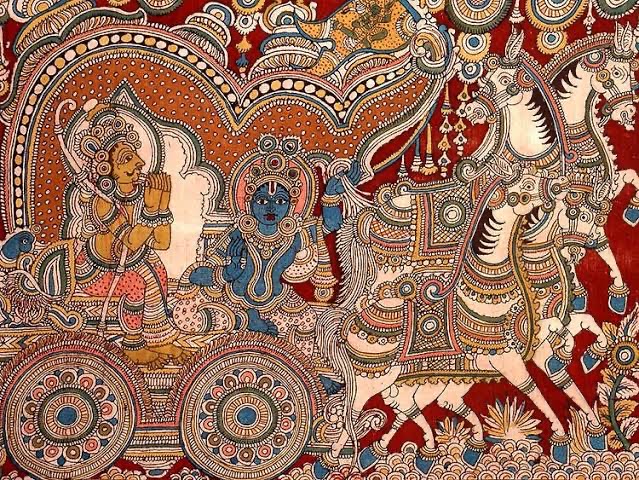
2. Sambalpuri:
Cotton fabrics of the Sambalpuri kind are distinguished by their distinctive production method, Ikat or Ikkat, sometimes referred to as Bandha Kalaa. Although it is largely manufactured in the Sambalpur district, this lovely textile is also created by weavers’ groups in the rural areas of western Odisha. Sambalpuri textiles come in a wide range of hues and patterns and include saris, dress materials, and furnishing fabrics made of silk, cotton, and mercerized cotton. Nearly all types of Baandha textiles exhibit the “extra warp” and “extra weft” style of design, which is mastered by Baandha artisans.
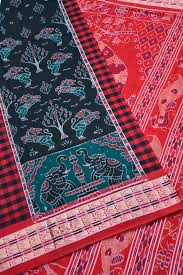
3. Patola:
One of Gujarat’s most well-known textiles, patola is distinguished by the weaving of separately coloured warp and weft yarns to produce surface motifs in accordance with the design. The name “patola” comes from the Sanskrit word “pattal,” which refers to a spindle-shaped gourd. A few well-known patterns include “Rattan Chowk” (where diamonds cross each other as they are spaced around walnut), “Narikunjar” (which depicts motifs of a dancing girl, a parrot, and an elephant), “Chhabri,” which is an elephant-made basket, “Waghkunjar” (which depicts a tiger and an elephant), and “Wadi Bhaff” (which depicts a flowering creeper). There are numerous geometrical, floral, and foliage motifs as well. The colours used are striking, quick, and well-balanced.

4. Pashmina:
Fine cream-colored goat’s wool with elaborate stitching is used to make pashminas. Pashmina, which in Kashmiri means “soft gold,” is sometimes hand-block printed using blocks that are more than a century old. One pashmina shawl takes a week to arrive. The shawl requires hand embroidery, which adds to the production time. It’s one of the most expensive fabrics because of the arduous work.
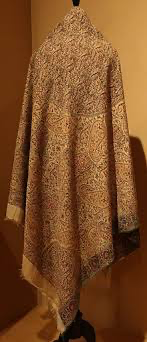
5. Ajrakh:
Given that one of the primary colours used in Ajrak printing is blue, it is possible that the term “Ajrak” derives from the Arabic word “Azrak,” which means “blue.” Natural dyes are used for printing, and the design is created using carved wooden blocks. It originated from Gujrat/Rajasthan.
6. Phulkari:
Phulkari, which literally translates into ‘flower work. With the simplest of tools, a needle, a silk thread and a high degree of skill the Punjabi’s are able to create the most amazing flowery surface designs. Phulkari pattern revolves around a solitary stitch.
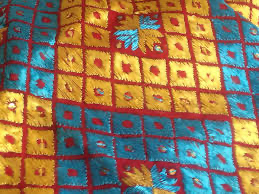
7. Khadi:
India Handspun and hand-woven from natural fibers, khadi is a textile. Also referred to as khaddar during British rule, this cloth represents just India or, as some claim, is Swadeshi. On the charkha, a spinning wheel, fibers are spun into yarn. It is a versatile fabric that may be used for both warm and cool weather. There is no need for a further introduction.
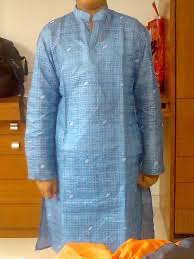
8. Katha on tussar:
On tussar silk, kantha is created using a straightforward running stitch around the edges and has its origin from Bengal. Many ancient symbols that are reflective of nature, like the sun, the tree of life, and the universe, can be found as motifs in Kantha embroidery.

9. Lepcha:
It was once believed that the Lepcha people of Sikkim wove their clothing with yarn made from the stinging nettle (sisnu) plant. Vegetable dyes and synthetic hues are being utilised with cotton and woollen yarn. White, red, black, yellow, and green are the predominant hues.
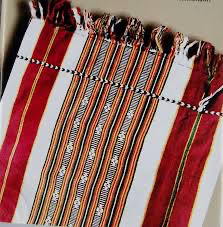
10. Bagru:
Indigo is a popular natural dye used in the traditional printing method known as bagru. Using wooden blocks, patterns are transferred using the direct and resist approaches. The cloth is regarded as environmentally friendly. This form of textile originated from Rajasthan.

11. Kanjivaram:
Originating from Kanchipuram Tamil Nadu,three plies of pure mulberry silk are used in the kanjivaram weave, and heavy zari is used to create the sari’s distinctive and elaborate patterns. The Korvai method of weaving is used by weavers, who join yarns of various colours for the body and border.
